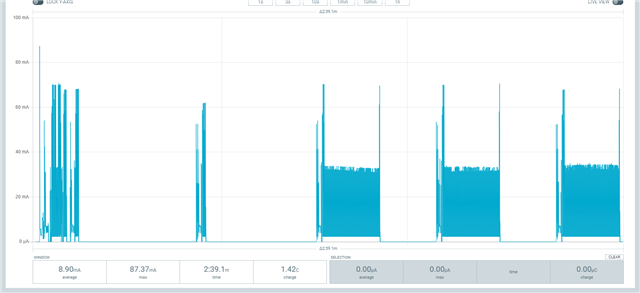Hi Supportteam,
i am trying to use Release Assistance Indication (RAI) to shorten the RRC-Connected using nRF9160 DK.
I'm enabling REL14FEAT with the following AT commands before LTE-connection:
AT%REL14FEAT=0,1,0,0,0
I then created a socket and configured with the option:
err = setsockopt(sock, SOL_SOCKET, SO_RAI_NO_DATA , NULL, 0);
In my prj.conf file i set:
CONFIG_LTE_RAI_REQ_VALUE="3"
Here is how the current draw looks like:

Here is the pcap and raw trace:
Modem Trace Interaktion.pcapng
trace-2022-01-06T10-48-30.560Z.bin
Is that which i have done realistic? What are the factors to consider when using RAI?
Thanks in advance
Best regards,
Cedric


